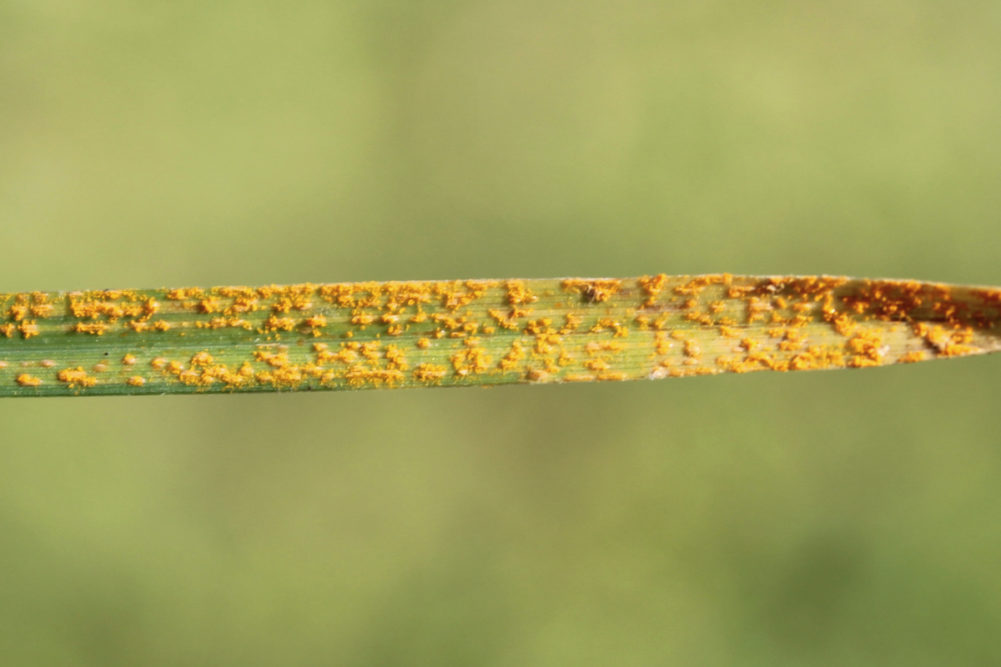MONTPELLIER, FRANCE — A new analysis by wheat scientists at the International Maize and Wheat Improvement Center (CIMMYT) published in Scientific Reports includes insights and genetic information that will help in the efforts to breed yellow rust resistant wheat.
To understand the shared genetic basis of yellow rust resistance over time and in three geographic regions, CIMMYT scientists performed a large genome-wide association study leveraging a dataset of 43,706 observations on 23,346 wheat lines evaluated between 2013 and 2019 at sites in India, Kenya and Mexico.
They found more than 100 repeatable — that is, statistically significant in multiple datasets — genome-wide markers associated with yellow rust that aligned to the reference genome of wheat.
“These findings represent a significant advancement in our knowledge about the genetics of yellow rust resistance in bread wheat and provide exciting opportunities for designing future genomics-based breeding strategies for tackling yellow rust,” said CIMMYT wheat scientist Philomin Juliana, the lead author of the paper.
CIMMYT wheat scientists have been breeding for yellow rust resistance since the early 1970s. Breeding for resistance involves crossing parents with slow rusting genes, selecting early-generation plants that exhibit resistance in Toluca, Mexico, and then subjecting the advanced generations to intense screening in sites like Karnal (in collaboration with the Indian Institute of Wheat and Barley Research) and Ludhiana (in collaboration with the Borlaug Institute for South Asia) in India; Njoro in Kenya; and Celaya (in collaboration with the Instituto Nacional de Investigaciones Forestales, Agricolas y Pecuarias), El Batan and Toluca in Mexico.
Identifying genes related to resistance can increase the efficiency of this selection process, giving breeders a head start by allowing them to begin the crossing process with varieties that are more likely to have resistance genes.
In the study, the wheat scientists also conducted “allelic fingerprinting” on the largest panel of wheat breeding lines to date — 52,067 lines — genomically characterizing them for yellow rust resistance. The resulting data creates opportunities using molecular markers to identify varieties with desired combinations of resistance genes.
“This information advances our knowledge on the genetics of yellow rust resistance in thousands of wheat lines, and has important implications for the future design of resistant crosses and varieties,” Juliana said.
Overall, the markers and fingerprints identified in this study are a valuable resource not only for CIMMYT breeders but also for the global wheat breeding community in its efforts to accelerate yellow rust resistance breeding, researchers said.
This work was made possible by the support of the Delivering Genetic Gain in Wheat (DGGW) project funded by the Bill & Melinda Gates Foundation and the UK Department for International Development (DFID) and managed by Cornell University; the US Agency for International Development’s Feed the Future Initiative; and the genotyping support of Dr. Jesse Poland from the innovation lab at Kansas State University.




